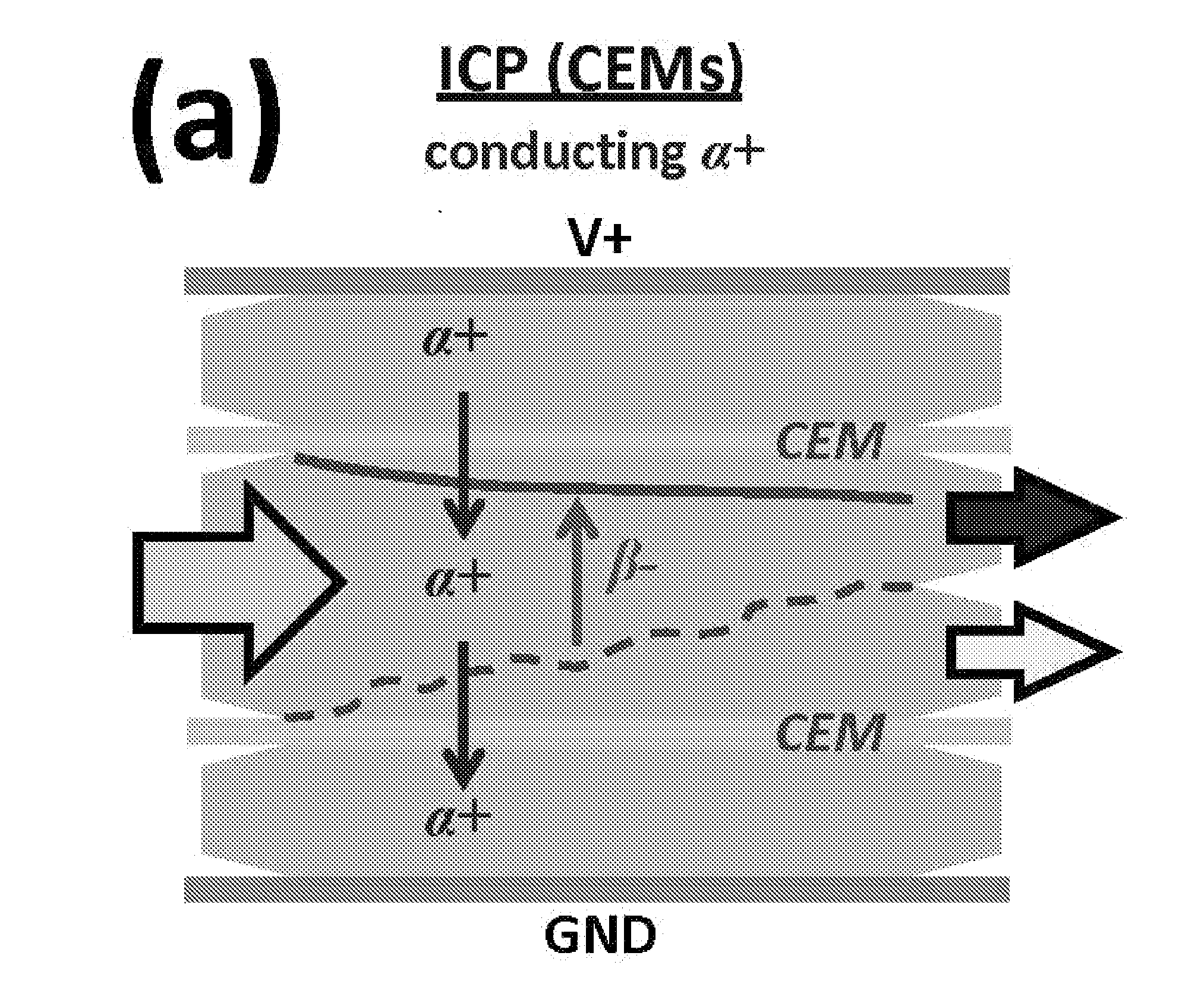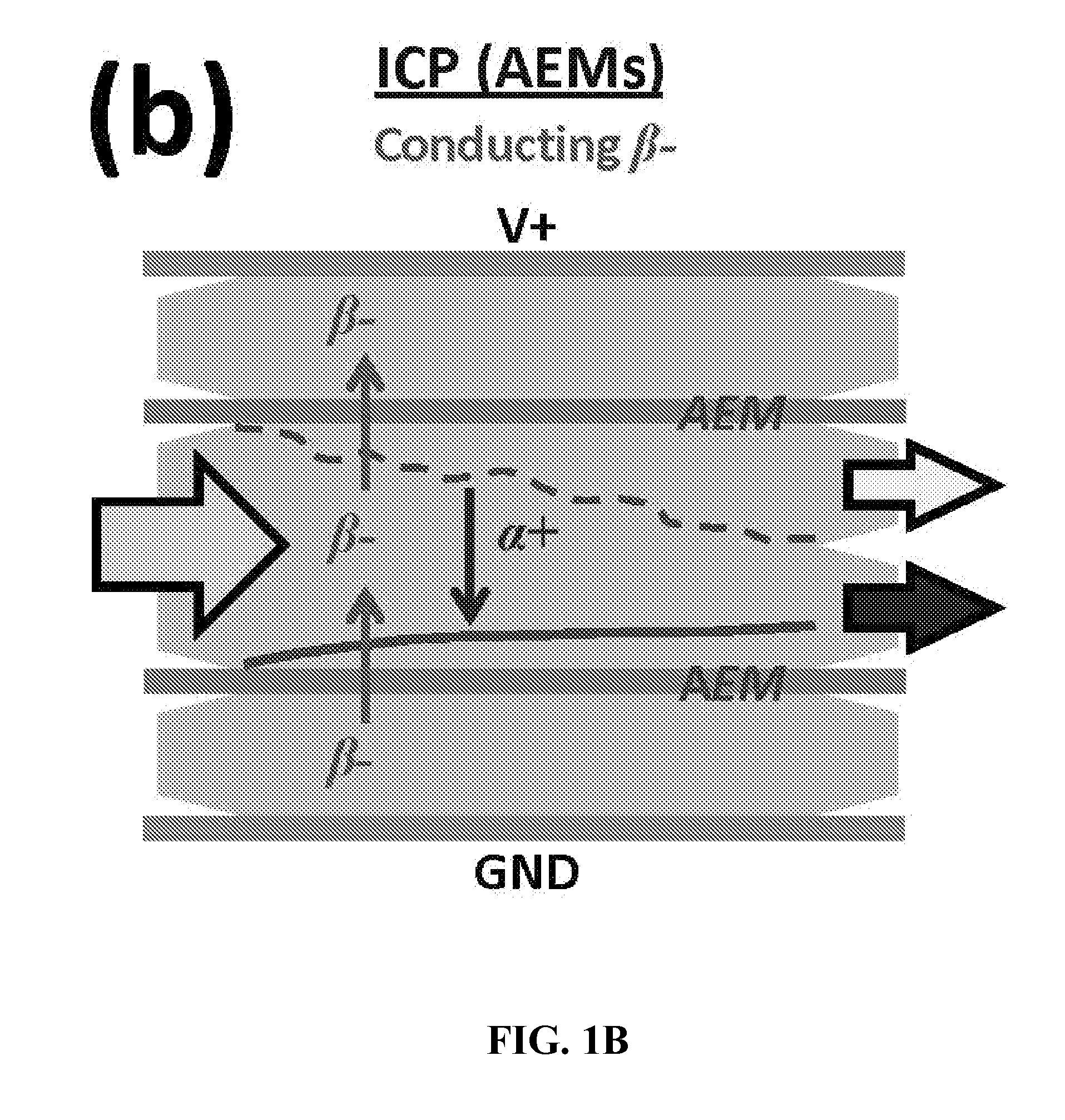Purification of ultra-high saline and contaminated water by multi-stage ion concentration polarization (ICP) desalination
a technology of ion concentration polarization and desalination, which is applied in the direction of water treatment multi-stage treatments, liquid/fluent solid measurement, peptides, etc., can solve the problems of large membrane area, rapid increase of total power consumption, poor area efficiency, etc., and achieve high salinity and cost reduction
- Summary
- Abstract
- Description
- Claims
- Application Information
AI Technical Summary
Benefits of technology
Problems solved by technology
Method used
Image
Examples
Embodiment Construction
[0023]A description of preferred embodiments of the invention follows.
Desalination and Purification for Seawater / Produced Water
[0024]Previously, we demonstrated ICP desalination using brackish (low saline) water. In order to verify the feasibility for highly concentrated water, we have carried out desalination experiments with natural seawater (from Revere Beach, Mass.) and high saline water (NaCl 1.0 M, similar salinity of typical flowback / produced water). FIG. 2A and FIG. 2B are visualizations of ICP desalination operation between two CEMs using natural seawater and high saline water, respectively, enhanced by adding small amounts of fluorescent dye to the feed solution. For monitoring real-time change of salt concentration in the dilute stream, we traced the conductivity value of desalted channel directly by connecting a flow-through conductivity probe (Microelectrode Inc., Bedford, N.H.). As shown in FIGS. 2A and 2B, the dark region, which actually means fluorescent dye-depleted...
PUM
| Property | Measurement | Unit |
|---|---|---|
| Concentration | aaaaa | aaaaa |
| Ion exchange properties | aaaaa | aaaaa |
| Electric field | aaaaa | aaaaa |
Abstract
Description
Claims
Application Information
 Login to View More
Login to View More - R&D
- Intellectual Property
- Life Sciences
- Materials
- Tech Scout
- Unparalleled Data Quality
- Higher Quality Content
- 60% Fewer Hallucinations
Browse by: Latest US Patents, China's latest patents, Technical Efficacy Thesaurus, Application Domain, Technology Topic, Popular Technical Reports.
© 2025 PatSnap. All rights reserved.Legal|Privacy policy|Modern Slavery Act Transparency Statement|Sitemap|About US| Contact US: help@patsnap.com



